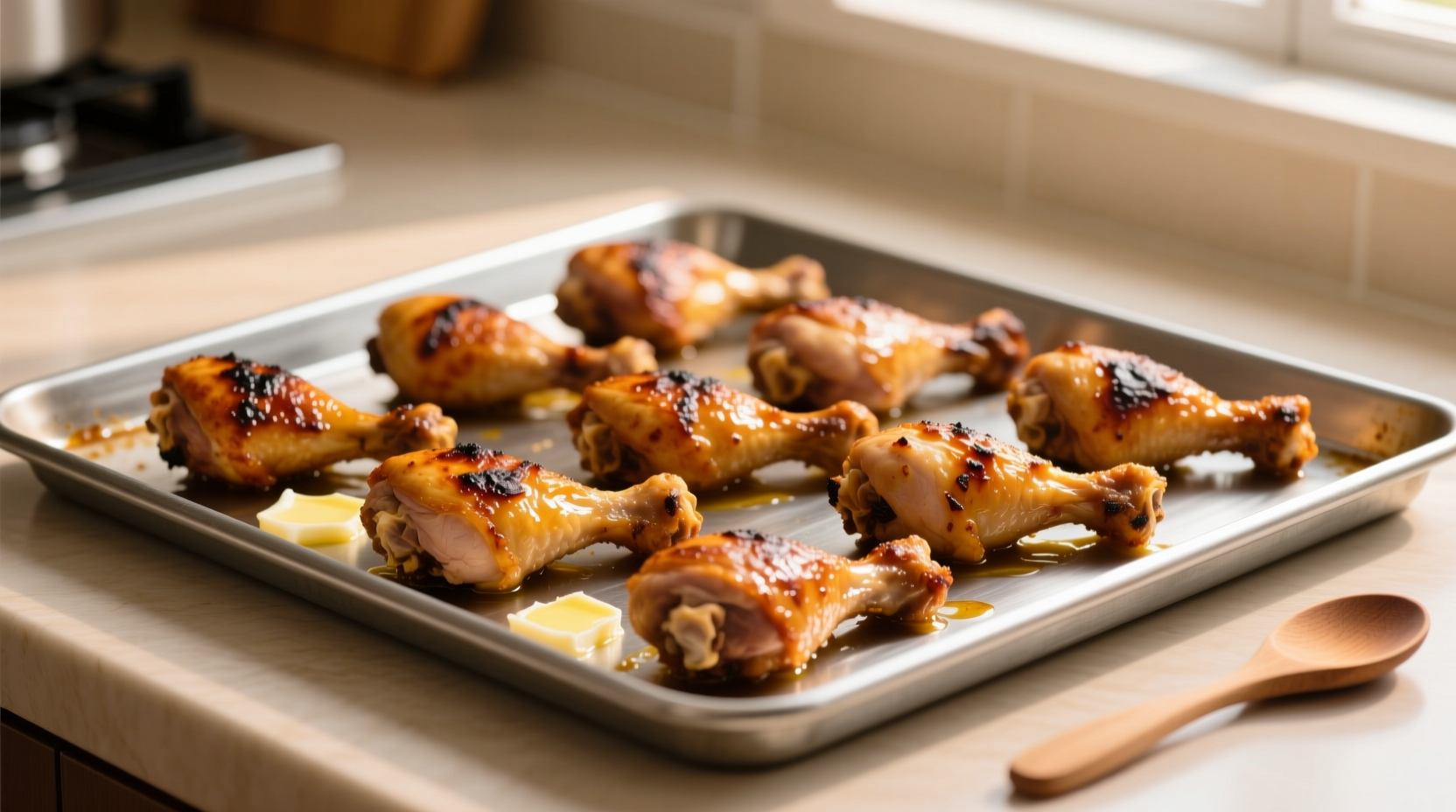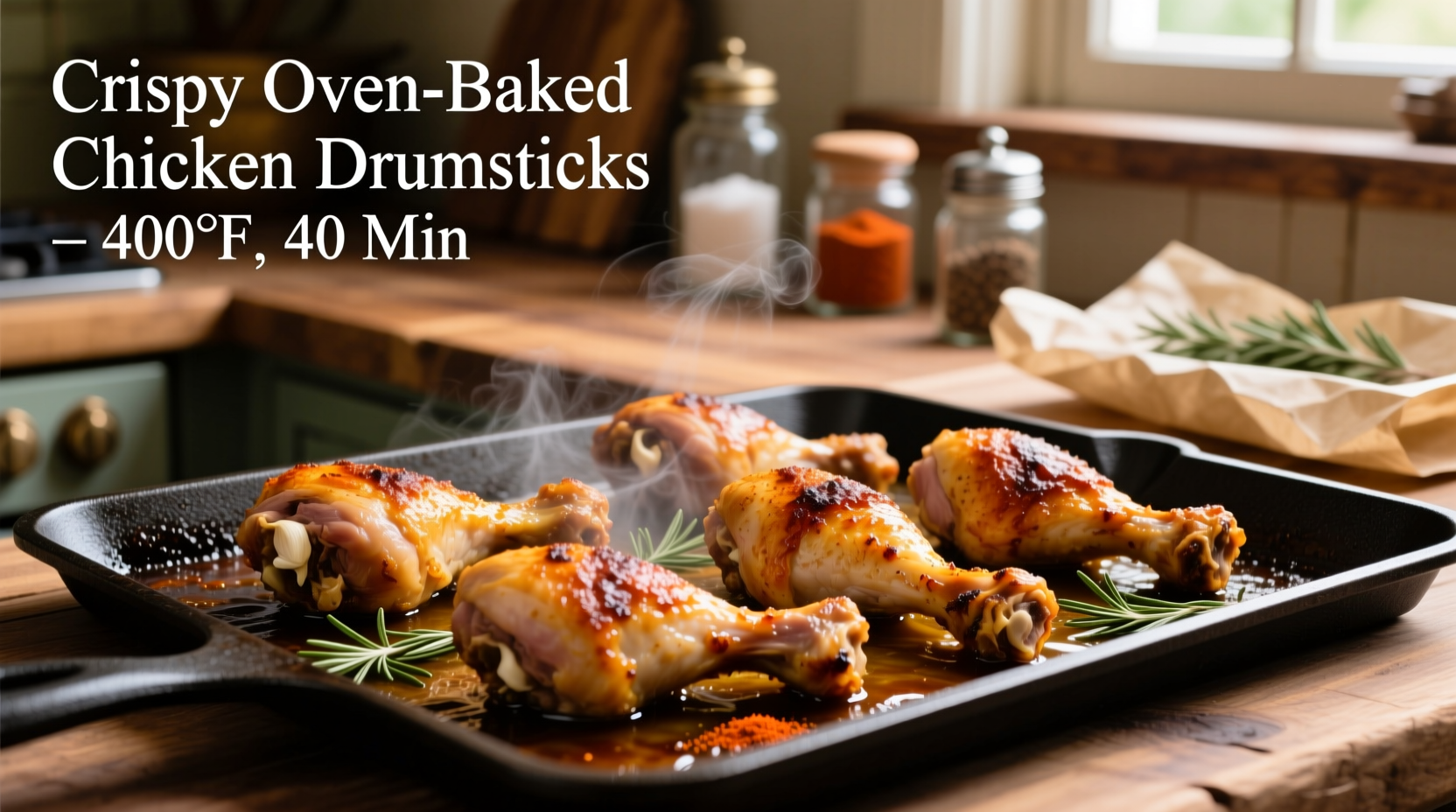Why This Oven Method Works Every Time
Nothing beats the convenience of oven-baked chicken drumsticks when you need a reliable weeknight dinner. Unlike stovetop methods that require constant attention, baking drumsticks in the oven delivers hands-off cooking with perfect results. The high heat creates irresistibly crispy skin while keeping the meat moist and flavorful. This technique works whether you're cooking for one or feeding a family.

What You'll Need Before You Start
Before handling raw chicken, gather these essentials to ensure food safety and optimal results:
- Oven-safe baking sheet or roasting pan
- Rack for elevating drumsticks (optional but recommended)
- Meat thermometer (critical for food safety)
- Sharp chef's knife for trimming excess fat
- Aluminum foil or parchment paper for easy cleanup
- Small bowl for seasoning mixture
| Oven Temperature | Cooking Time | Best For |
|---|---|---|
| 375°F (190°C) | 45-55 minutes | Extra-crispy skin with even cooking |
| 400°F (204°C) | 35-45 minutes | Perfect balance of crispiness and juiciness |
| 425°F (218°C) | 30-40 minutes | Maximum crispiness (watch carefully) |
Your Step-by-Step Cooking Process
Prep Work: 10 Minutes That Make All the Difference
Dry drumsticks thoroughly with paper towels before seasoning. Moisture is the enemy of crispy skin, so this simple step dramatically improves results. Trim any excess fat or loose skin with a sharp knife. According to USDA food safety guidelines, always handle raw poultry on a dedicated cutting board and wash hands thoroughly after contact (USDA Food Safety and Inspection Service).
Seasoning: Building Flavor Layers
Create a simple but effective seasoning blend:
- 1.5 teaspoons kosher salt (adjust for dietary needs)
- 1 teaspoon black pepper
- 1 teaspoon garlic powder
- 1 teaspoon paprika (smoked for extra depth)
- 0.5 teaspoon onion powder
- Optional: 0.25 teaspoon cayenne for heat
Mix dry spices in a small bowl, then rub evenly over all surfaces of the drumsticks. For maximum flavor penetration, let seasoned drumsticks rest uncovered in the refrigerator for 1-4 hours before cooking.
Baking: The Critical Temperature Window
Preheat your oven to 400°F (204°C) with rack positioned in the center. Line your baking sheet with foil or parchment paper for easy cleanup. Place drumsticks on the sheet with space between them (crowding causes steaming instead of crisping).
Bake for 35-45 minutes, flipping once halfway through cooking. The exact time depends on drumstick size:
- Small drumsticks (4-5 oz): 35 minutes
- Medium drumsticks (6-7 oz): 40 minutes
- Large drumsticks (8+ oz): 45 minutes
Determining Doneness: Beyond Guesswork
Never rely on color alone to determine if chicken is cooked. Insert an instant-read thermometer into the thickest part of the meat, avoiding bone. The USDA Food Safety and Inspection Service confirms chicken is safe to eat at 165°F (74°C) internal temperature (USDA Temperature Guidelines).
Additional visual cues include:
- Juices run clear when pierced with a knife
- Meat pulls away slightly from the bone
- Skin is golden brown with crispy edges
Avoid These Common Mistakes
Even experienced cooks make these oven chicken errors:
- Not drying the skin - Moisture prevents proper crisping
- Overcrowding the pan - Creates steam instead of dry heat
- Skipping the thermometer - Leads to dry or undercooked chicken
- Flipping too early - Wait until skin releases naturally from the pan
- Cutting immediately - Rest for 5-7 minutes to retain juices
Serving and Storage Tips
Let drumsticks rest for 5-7 minutes after cooking to allow juices to redistribute. Serve with lemon wedges for brightness and your favorite sides. Leftovers keep well in airtight containers in the refrigerator for 3-4 days.
For reheating, skip the microwave. Instead, warm in a 350°F oven for 10-15 minutes or until heated through to maintain texture. Frozen cooked drumsticks maintain quality for up to 3 months.
When This Method Works Best (and When to Choose Alternatives)
This oven method shines for:
- Weeknight dinners with minimal active time
- Cooking multiple servings at once
- When you want hands-off cooking
Consider alternatives when:
- You need ultra-crispy skin (try air frying)
- You're cooking for just one person (stovetop may be faster)
- You want smoky flavor (grill instead)
Perfect Pairings for Your Oven-Baked Drumsticks
Balance the rich flavor of chicken with these complementary sides:
- Roasted vegetables (potatoes, carrots, Brussels sprouts)
- Fresh green salad with light vinaigrette
- Creamy coleslaw for contrast
- Simple rice pilaf or quinoa
Troubleshooting Your Results
Skin isn't crispy? Increase oven temperature by 25°F next time or position rack higher in the oven. Ensure drumsticks are completely dry before seasoning.
Meat is dry? You likely overcooked them. Use a thermometer and remove at exactly 165°F. Larger drumsticks may need slightly lower temperature for longer time.
Uneven cooking? Rotate the pan halfway through cooking and ensure drumsticks are similar size. Flip carefully with tongs to avoid tearing the skin.











 浙公网安备
33010002000092号
浙公网安备
33010002000092号 浙B2-20120091-4
浙B2-20120091-4